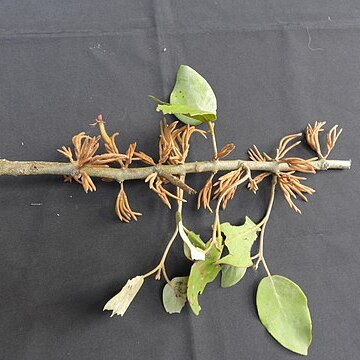Aerial stem-parasitic shrubs, more or less clothed in a tomentum of stellate and dendritic hairs, slender to moderately robust, with epicortical runners bearing secondary haustoria. Leaves opposite, different above and below (especially with respect to indumentum). Inflorescence a simple 3-to 10-flowered raceme of decussate flowers, rarely 2-flowered and apparently umbellate; bract single under each flower, simple. Corolla 4-merous, gamopetalous, zygomorphic, with the tube curved prior to anthesis, deeply split on the inner side of the curve; lobes reflexed to the outer side at anthesis. Anthers basifixed, immobile. Style simple, with a knob-like stigma. Fruit obovoid, club-like, distinctly stipitate. Fig. 41.

